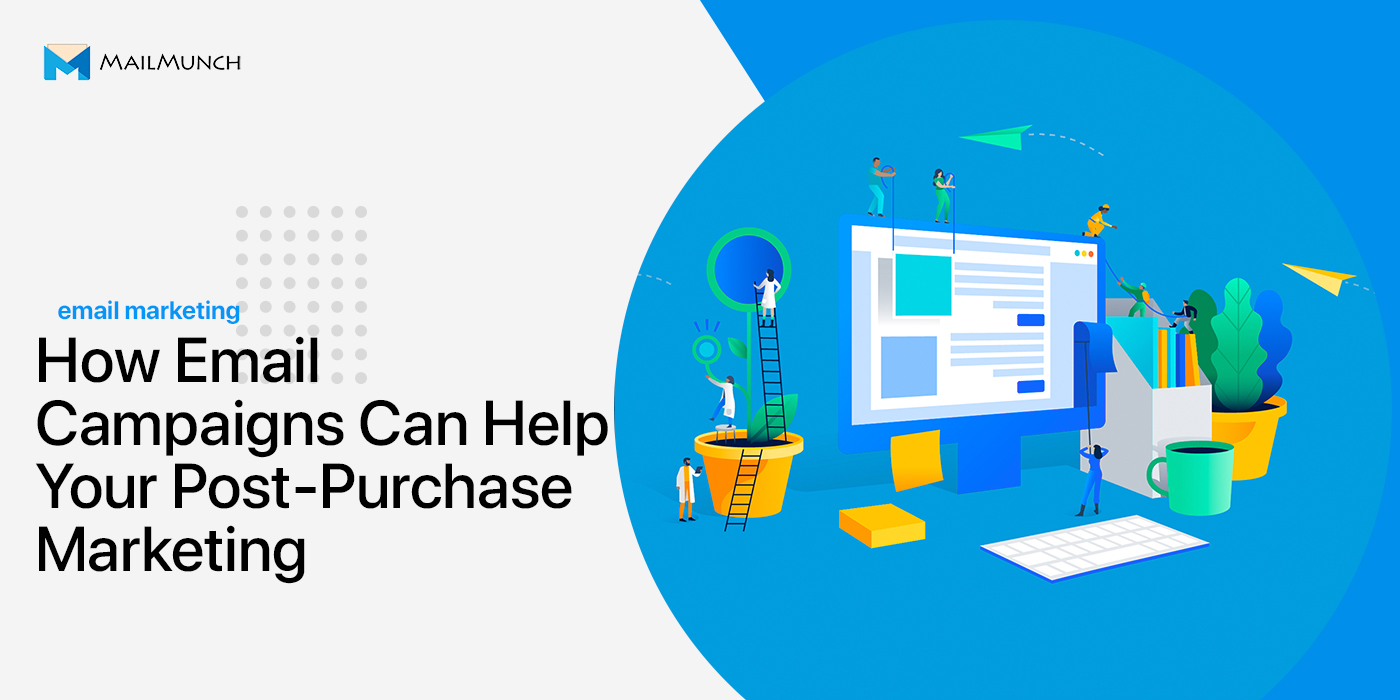

Last updated on
June 7, 2023
Most companies spend colossal effort on getting new customers: They are constantly updating their service, improving customer support, introducing new products, creating amazing packaging, crafting creative newsletters, investing in apps, and working on the design of physical stores. Every brand has customer plans dictating how many clients should be engaged during a particular period - a month, quarter, or year.
With so much energy put into customer acquisition, it’s not so surprising to find out that companies’ focus gets weaker when it comes to the retention of old clients. While many marketing analysts keep on preaching the benefits of a smart post-purchase strategy, its fundamental importance is routinely overlooked by many businesses.
The idea behind such neglect is rather trivial: why bother to spend extra effort and resources if we’ve already got these people on board?
However, those days when customers stayed loyal to one brand for years are long gone. With competition so intense in today’s world, it’s simply unwise to waste the potential of the beneficial relationships that you’ve already built.
In this post, we’ll offer you 5 reasons why you should still focus on customer retention through post-purchase marketing, followed by the types of emails that are best used to increase the lifetime value of a customer.
These people have already shown interest in your product, meaning you‘ve managed to fulfill some of their needs. This doesn’t mean though that you should be resting on your laurels: your competitors definitely don’t. Count how much money you’ve spent on ads and bringing traffic to your business to get one client; now compare it to the cost of one thank you email that can turn a new client into a repeat revenue source. Post-purchase assistance has become one of the marketing defining trends of the last few years for a good reason: it’s more cost-efficient and has a better response rate.
Acquiring a high-quality client base is a long-term play, taking years to pay off, if ever. Search engines rank content based on not always clear algorithms; abundance of digital advertising has made many people immune to most campaigns; social media platforms keep on implementing more strict advertising policies. But with an existing customer, you don’t need to wonder when (and if) your offer reaches the target audience: it has already done so. Your only task now is to consistently assure people they’ve made the right choice.
If people have used your services once or twice, and their shopping experience was satisfying, chances are good they’d be more likely to subscribe to your newsletters, follow you on social media, or share with friends. After a while, they may feel ready to hear from you more often and allow you to send web or mobile push notifications.
And if your service remains as satisfying, people can even make it as far as providing their phone numbers, agreeing to receive messages via Viber or WhatsApp. And there’s no need to explain that the more channels you have to reach your customers, the more options you have to collect additional data and eventually come up with more personalized and relevant offers. The more relevant the offer is, the more chances it has of being considered.
In the last 10 years, the marketing world has been stormed by influencers of all kinds who are ready to promote any product for a fair reward. With thousands and very often millions of followers, one mention of your product by such industry experts can generate big traffic, but the cost of such service equals the social weight of the influencer. The bigger their audience, the deeper you’d have to dive in your pocket.
On the other hand, word of mouth is a free service that carries as much significance, if not more, especially for small local businesses. Positive feedback on your website, thankful comments, and likes, or grateful mentions in friendly conversations can be as good sales promotions. A recommendation by a friend who has enjoyed your product is the best advertisement: it’s more trustworthy and doesn’t cost you a cent.
The reputation of a quality service provider is great; the reputation of a quality service provider with a strong customer support program is priceless. Today, it’s not enough to simply produce good products; ensuring the satisfying post-purchase experience is equally important. People who have problems with shipping, struggle with instructions, face bad attitude of the sales team, or can’t reach customer support don’t convert into repeat clients. And definitely don’t characterize you as a caring brand when telling their friends how many futile attempts they had while ordering a callback from you.
Every company develops an email marketing strategy based on their particular needs and business goals. And as we’ve hopefully proved above, post-purchase support should be one of the key elements in this strategy. But whatever role it plays, post-purchase emails are the easiest and proven way to demonstrate your concern.
Whatever type of emails you most often use, be it a thank you message, shipment confirmation or feedback request, there are basic rules you need to stick to.
Sales offers are not the only way to continue a conversation with the customer and secure new purchases. The concept of post-purchase assistance has broadened to a great extent, with many original communication forms devised.
As a company, you can be thankful for many things a customer does: when they make an order, stay with your company for one year, sign up for your campaigns, participate in a challenge or contest, etc. However, don’t be too aggressive with new offers: a CTA in every paragraph will turn your appreciation into a regular promo.
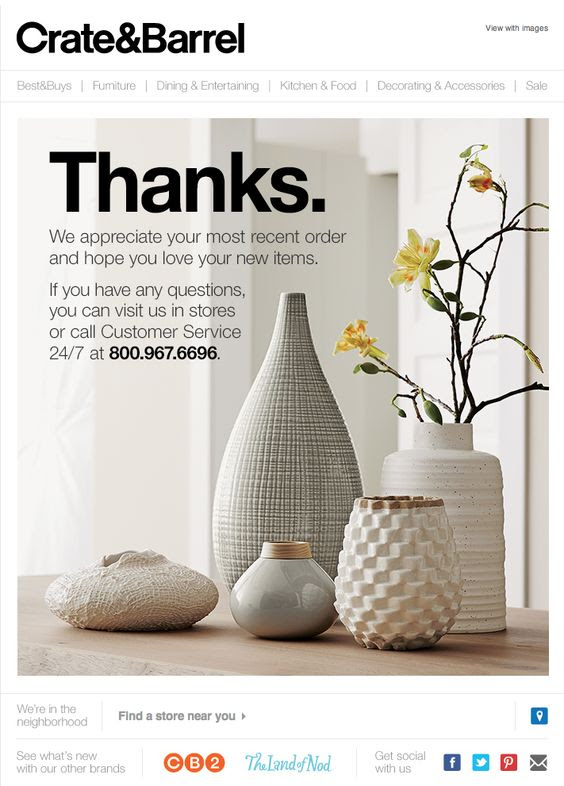
You can read this guide to see more thank you email examples and also learn how to make one.
It should be part of your order management and marekting to let the customer know they’ve made the right decision and now can look forward to a delivery man to knock on their door, send a confirmation email with the full order details: ordered item, payment method, order date, estimated delivery, and any other relevant information.

A subcategory of an order confirmation, this quick reminder serves to ensure the customer one more time that their order is on the way.
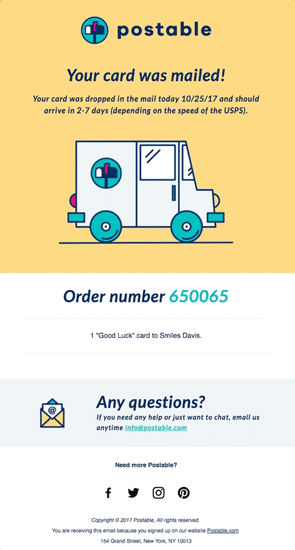
A free shipment, a monthly subscription or a free video download, if people benefit from buying from you (besides getting a good-quality product) don’t be shy in adding more value for your customers through bonus offer notifications.

Give people advice on what they might have missed out during their previous shopping session. Based on the recent purchase, recommend what product could make it a good match or complement its functions.
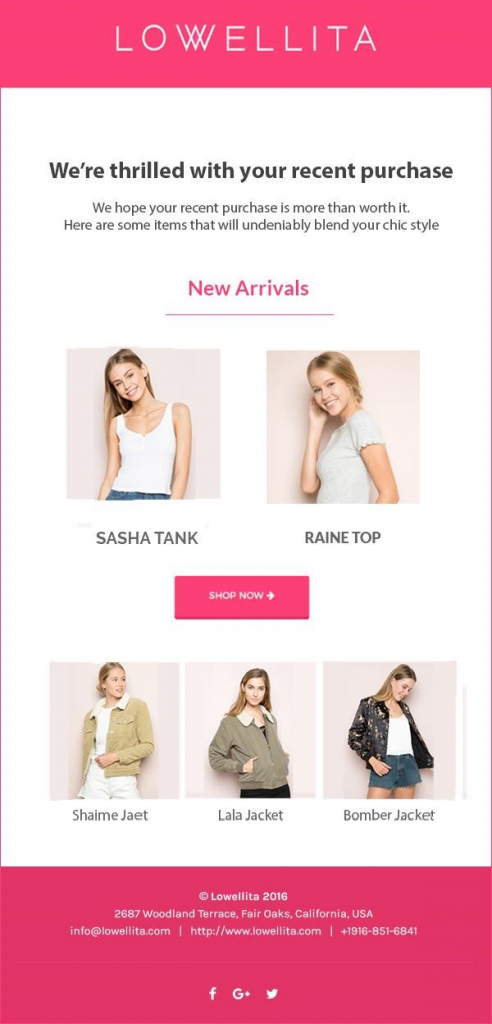
An instruction doesn’t necessarily have to guide on how to manage a robot vacuum cleaner: let your customers know how they can benefit from a new loyalty program, apply for a free trial, or upgrade their app. Your explanations should be short, understandable, and preferably supported by illustrative images or infographics.
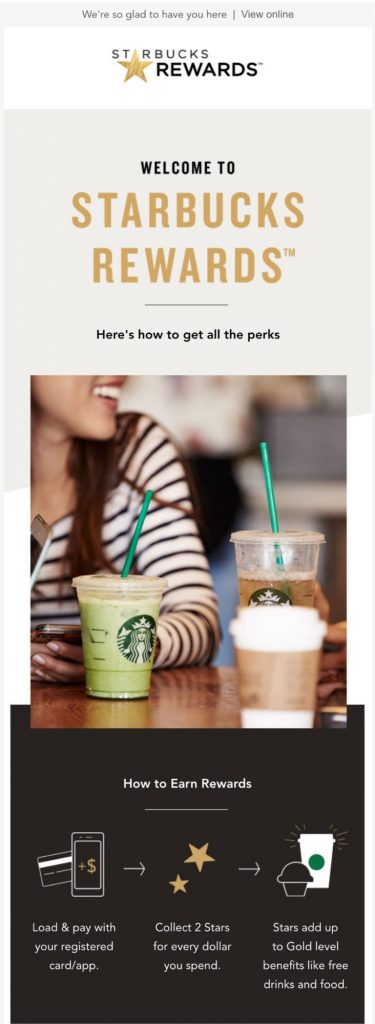
From household appliance producers to clothing retailers, any company that sells long-lasting products designed to serve for years should provide useful info on how to secure this sort of service. Avoid giving generic advice; your tips should be tested and proven and applicable to your particular product.

Find the right time to tell your customers it’s time to restock. Don’t send a replenishment email a day after a person bought five bottles of shampoo: it’s obvious they didn’t have time to use them all. Calculate the time needed for complete usage of your particular product and use it to schedule reminder emails.

Ask not only about the product itself: customer support, shipment, delivery, and even package preferences deserve to be covered as well. Consider using the newly introduced AMP technology to craft user-friendly emails: it enables your customers to fill in any questionnaires or surveys straight in the email body, without downloading extra pages.

Invite people to forward your offers to their friends, and explain how they can benefit from advocating your product. Describe the process in simple steps and feel free to add a noticeable CTA: the world deserves to know about truly good products.

Inactive users aren’t lost to your brand forever. Yes, every company loses customers, but you can make several reactivation attempts before saying a final goodbye. Small gifts, free shipping, or a promo code can help you do the trick.

Everyone makes mistakes. It’s your readiness to own and fix them that determines your reputation. Don’t be afraid to admit you’ve messed up: several lines with a sincere apology can win customers’ love back.

Not always easily visible, customer loyalty belongs to hardly measurable categories. But that doesn’t mean you can neglect it.
Important for startups in their first years, client retention is equally essential for big corporations. Building solid relationships with your customers requires a long-term commitment and doesn’t bring overnight shifts. But once you’ve enhanced your overall marketing effort with a few solid post-purchasing strategies, the results won’t be slow in coming.
Content marketing guru at Mailmunch. I’m passionate about writing content that resonates with people. Live simply, give generously, stay happy.
Tags:

M. Usama
April 19, 2024

M. Usama
April 19, 2024

M. Usama
April 18, 2024